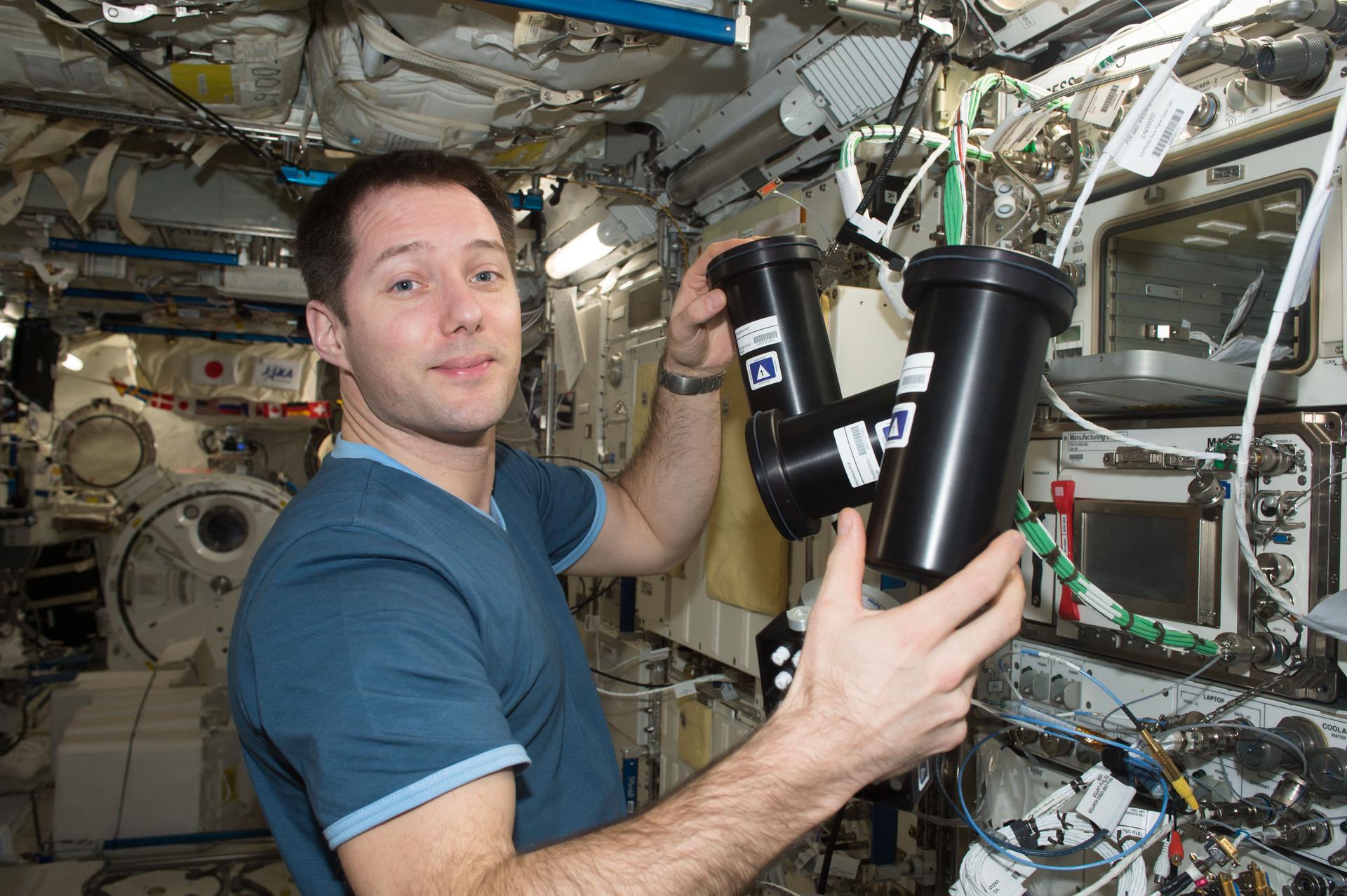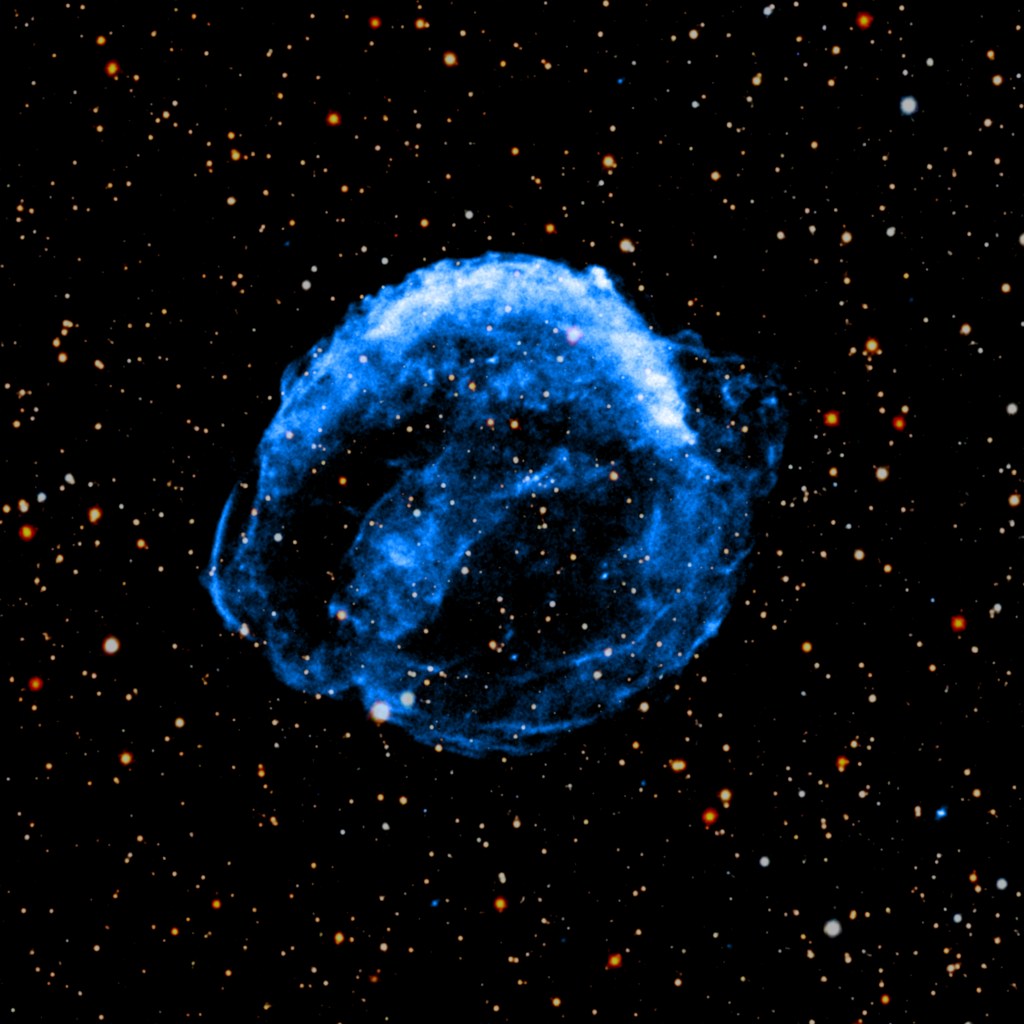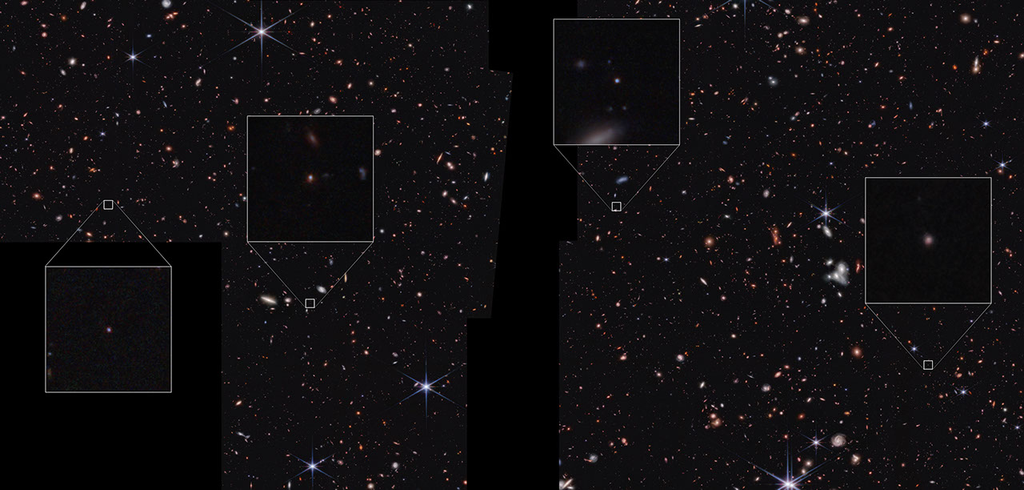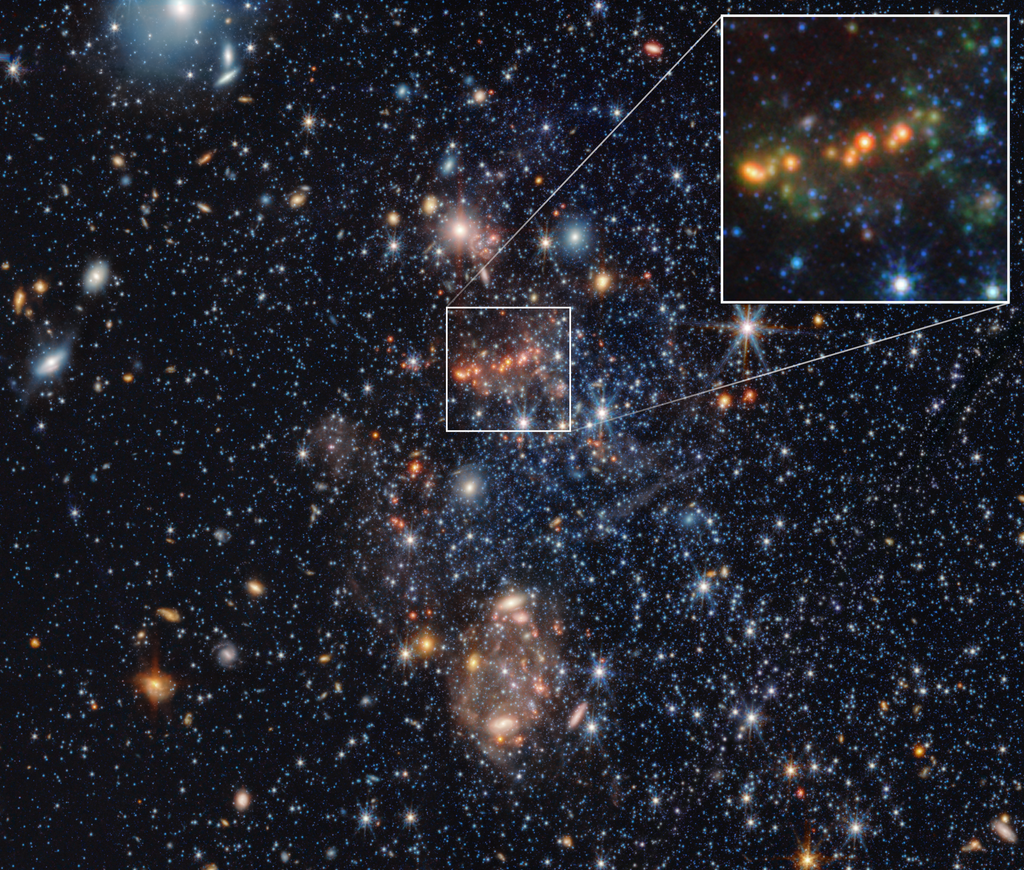BACKGROUND INFORMATION: STELLAR NURSERIES FAR AWAY
The giant cloud of hydrogen gas shown in this NASA Hubble Space Telescope image contains a large number of hot, massive stars. Many are probably over 20 times more massive than our Sun (and thus over 100,000 times more luminous). All of the stars are very young, less than 10 million years old. They reside in a region called Hubble-V.
Hubble's spectacular resolution allowed a group of European and American astronomers to pinpoint individual stars in this crowded region and measure their brightness and temperatures. (Hubble-V represents one of two star-birth regions studied by the astronomers.) They made their extensive analysis because of the telescope's ability to detect ultraviolet light, which is emitted by the hottest young stars. Their analysis has provided a better understanding of the populations of stars inside the cloud. (Results by L. Bianchi, S. Scuderi, P. Massey and M. Romaniello appeared in the April 2001 issue of the Astronomical Journal).
Hubble's sharp "eye" also allowed the astronomers to estimate the temperatures, brightness, ages, and masses of many stars. From this information, the astronomers determined that many of the stars formed at the same time.
The hot, massive stars emit a tremendous amount of radiation, which sculpted and illuminated the large gas cloud in which the stars were born. The cloud is actually composed of several "bubbles" of gas blown by the hefty stars. The hot radiation also energizes the gas, making it glow.
Besides unleashing powerful ultraviolet radiation, the massive stars also lose a significant amount of mass in "stellar winds." These winds travel at supersonic speeds (up to 6.7 million miles an hour or 10.8 million kilometers an hour), carrying away up to more than a solar mass per star every million years. The winds slam into the surrounding gas cloud, and may play a major role in triggering star formation of smaller-mass stars. The young stellar families in Hubble-V are revealing the exact roles of all the stars in a stellar breeding ground. Hubble-V resides in a galaxy called NGC 6822, 1.6 million light-years away.
Why are these very massive stars so important?
The interiors of massive stars – unlike those of most stars, including the Sun – reach high enough temperatures to transform through nuclear fusion great quantities of primordial elements, such as hydrogen and helium, into heavier elements. Therefore, they are responsible for producing all the existing oxygen, carbon, nitrogen, silicon, and calcium – just to name a few very familiar, life-sustaining elements. And they do so very effectively, too. A very massive star completes its life cycle in about 10 million years (1,000 times faster than the Sun). As a massive star reaches the end of its life, it releases most of its processed material back into space by exploding as a supernova or by shedding it more gently, forming the delicate shells of a planetary nebula.

































